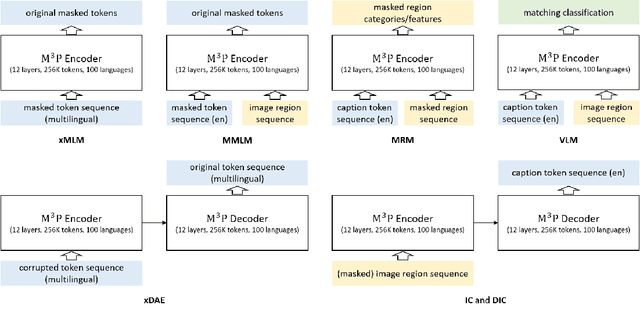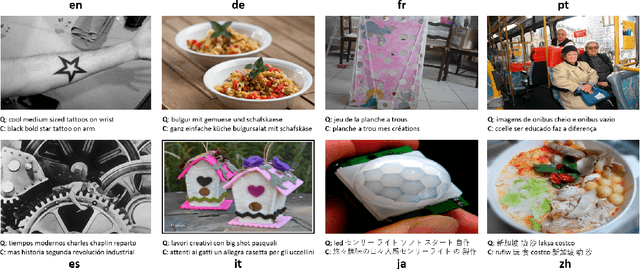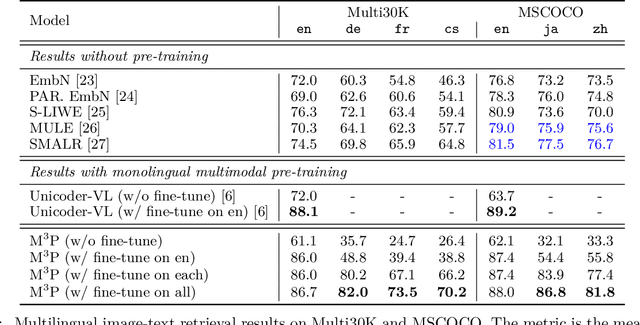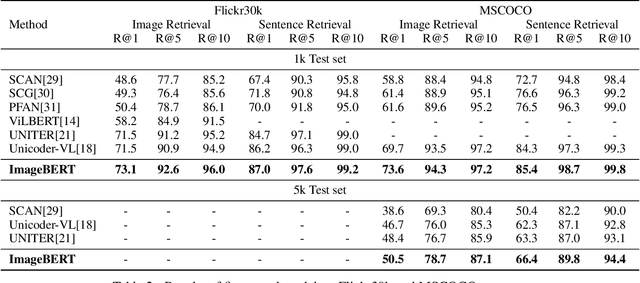Di Qi
Step1X-3D: Towards High-Fidelity and Controllable Generation of Textured 3D Assets
May 12, 2025Abstract:While generative artificial intelligence has advanced significantly across text, image, audio, and video domains, 3D generation remains comparatively underdeveloped due to fundamental challenges such as data scarcity, algorithmic limitations, and ecosystem fragmentation. To this end, we present Step1X-3D, an open framework addressing these challenges through: (1) a rigorous data curation pipeline processing >5M assets to create a 2M high-quality dataset with standardized geometric and textural properties; (2) a two-stage 3D-native architecture combining a hybrid VAE-DiT geometry generator with an diffusion-based texture synthesis module; and (3) the full open-source release of models, training code, and adaptation modules. For geometry generation, the hybrid VAE-DiT component produces TSDF representations by employing perceiver-based latent encoding with sharp edge sampling for detail preservation. The diffusion-based texture synthesis module then ensures cross-view consistency through geometric conditioning and latent-space synchronization. Benchmark results demonstrate state-of-the-art performance that exceeds existing open-source methods, while also achieving competitive quality with proprietary solutions. Notably, the framework uniquely bridges the 2D and 3D generation paradigms by supporting direct transfer of 2D control techniques~(e.g., LoRA) to 3D synthesis. By simultaneously advancing data quality, algorithmic fidelity, and reproducibility, Step1X-3D aims to establish new standards for open research in controllable 3D asset generation.
Predicting 3D representations for Dynamic Scenes
Jan 28, 2025



Abstract:We present a novel framework for dynamic radiance field prediction given monocular video streams. Unlike previous methods that primarily focus on predicting future frames, our method goes a step further by generating explicit 3D representations of the dynamic scene. The framework builds on two core designs. First, we adopt an ego-centric unbounded triplane to explicitly represent the dynamic physical world. Second, we develop a 4D-aware transformer to aggregate features from monocular videos to update the triplane. Coupling these two designs enables us to train the proposed model with large-scale monocular videos in a self-supervised manner. Our model achieves top results in dynamic radiance field prediction on NVIDIA dynamic scenes, demonstrating its strong performance on 4D physical world modeling. Besides, our model shows a superior generalizability to unseen scenarios. Notably, we find that our approach emerges capabilities for geometry and semantic learning.
Slot-guided Volumetric Object Radiance Fields
Jan 04, 2024



Abstract:We present a novel framework for 3D object-centric representation learning. Our approach effectively decomposes complex scenes into individual objects from a single image in an unsupervised fashion. This method, called slot-guided Volumetric Object Radiance Fields (sVORF), composes volumetric object radiance fields with object slots as a guidance to implement unsupervised 3D scene decomposition. Specifically, sVORF obtains object slots from a single image via a transformer module, maps these slots to volumetric object radiance fields with a hypernetwork and composes object radiance fields with the guidance of object slots at a 3D location. Moreover, sVORF significantly reduces memory requirement due to small-sized pixel rendering during training. We demonstrate the effectiveness of our approach by showing top results in scene decomposition and generation tasks of complex synthetic datasets (e.g., Room-Diverse). Furthermore, we also confirm the potential of sVORF to segment objects in real-world scenes (e.g., the LLFF dataset). We hope our approach can provide preliminary understanding of the physical world and help ease future research in 3D object-centric representation learning.
M3P: Learning Universal Representations via Multitask Multilingual Multimodal Pre-training
Jun 04, 2020



Abstract:This paper presents a Multitask Multilingual Multimodal Pre-trained model (M3P) that combines multilingual-monomodal pre-training and monolingual-multimodal pre-training into a unified framework via multitask learning and weight sharing. The model learns universal representations that can map objects that occurred in different modalities or expressed in different languages to vectors in a common semantic space. To verify the generalization capability of M3P, we fine-tune the pre-trained model for different types of downstream tasks: multilingual image-text retrieval, multilingual image captioning, multimodal machine translation, multilingual natural language inference and multilingual text generation. Evaluation shows that M3P can (i) achieve comparable results on multilingual tasks and English multimodal tasks, compared to the state-of-the-art models pre-trained for these two types of tasks separately, and (ii) obtain new state-of-the-art results on non-English multimodal tasks in the zero-shot or few-shot setting. We also build a new Multilingual Image-Language Dataset (MILD) by collecting large amounts of (text-query, image, context) triplets in 8 languages from the logs of a commercial search engine
ImageBERT: Cross-modal Pre-training with Large-scale Weak-supervised Image-Text Data
Jan 23, 2020



Abstract:In this paper, we introduce a new vision-language pre-trained model -- ImageBERT -- for image-text joint embedding. Our model is a Transformer-based model, which takes different modalities as input and models the relationship between them. The model is pre-trained on four tasks simultaneously: Masked Language Modeling (MLM), Masked Object Classification (MOC), Masked Region Feature Regression (MRFR), and Image Text Matching (ITM). To further enhance the pre-training quality, we have collected a Large-scale weAk-supervised Image-Text (LAIT) dataset from Web. We first pre-train the model on this dataset, then conduct a second stage pre-training on Conceptual Captions and SBU Captions. Our experiments show that multi-stage pre-training strategy outperforms single-stage pre-training. We also fine-tune and evaluate our pre-trained ImageBERT model on image retrieval and text retrieval tasks, and achieve new state-of-the-art results on both MSCOCO and Flickr30k datasets.
 Add to Chrome
Add to Chrome Add to Firefox
Add to Firefox Add to Edge
Add to Edge